By Peter Suciu
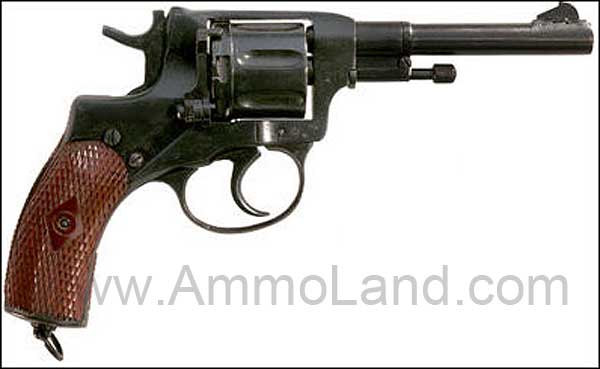
Michigan –-(Ammoland.com)- One of the most unique vintage military revolvers is known for its use in Russia, but yet it was in fact a Belgian designed firearm.
This was the Nagant Model 1895 Revolver, which was in actuality developed in 1894 by Emile and Leon Nagant, two Belgian gun designers, who had previous experience with the Russian arms industry.
Their development of the revolver coincided with the Imperial Russian Army’s need for a new sidearm, which the firm of Fabrique d’armes Emile et Leon Nagant designed and brought to production. The Nagant brothers were already well known at the Russian Court as they had previously helped design the now infamous Mosin-Nagant Model 1892 rifle.
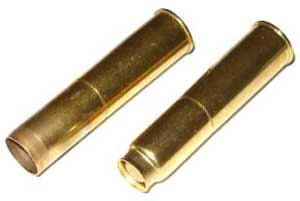
What makes the Nagant Model 1895 firearm so unique is that unlike other revolvers, it features a cylinder that moves forward before the hammer strikes the round, thus closing the cap from the cylinder to the barrel. Additionally, the Nagant M1895 further utilized a specially designed cartridge with a long case that featured a tapered mouth that keeps the bullet seated inside the case below the cartridge case rim. This was the 7.62x38mmR, which is also known today as the 7.62mm Nagant less commonly as the Cartridge, Type R.
Together the features of the gun’s design along with the bullet configuration prevent gas leakage between the cylinder and the barrel, making this one of the only revolvers that could effectively be used with a silencer – although that wasn’t really a consideration when it was developed. To the designers, the deeply seated bullet within the cartridge of the case allowed for the velocity of the bullet to be increased by 50 to 150 feet per second.
Additionally, at the time however the caliber was chosen as a way to simplify the tooling used in barrel making and manufacture of projectiles. The drawback of this cylinder design is that the Nagant Model 1895 Revolver has a rather heavy pull of 13 pound with the single action trigger and a 20 pound double action trigger pull.
The other downside is that the Nagant M1895 can be a difficult gun to reload, with one cartridge at a time being loaded and then extracted manually. This is obviously not practical in combat situations.
The Nagant Model 1895 Revolver was produced throughout World War I in both single-action and double-action versions, and this has come to be known as “private’s” or “enlisted” models and “officer’s models” respectively. However, whether this is fully accurate has yet to be absolutely determined. What is a known fact is that except for rare examples for target competition and similar uses, production of the single action variety ended in 1918. Likewise many single-action revolvers were converted to double action, and as a result today single-action examples are extremely rare.
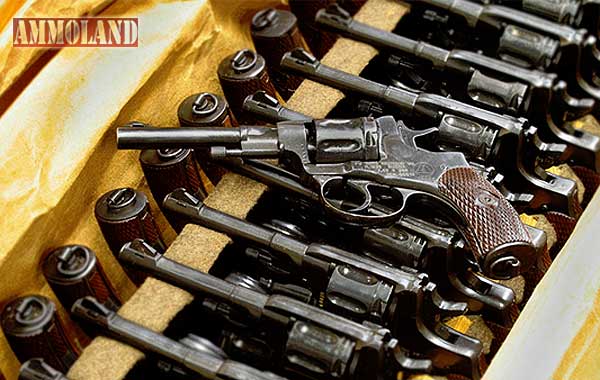
Nagant Model 1895 Revolver
Furthermore, while the Nagant M1895 Revolver was in fact designed for the Czar’s army, it did remain in use through the Russian Revolution and Civil War, and was utilized by the Soviets. Production, which had originally begun in Belgium and moved to Russia long before the outbreak of the First World War, continued after the Soviets took power. The gun served throughout the world and was used in a variety of wars, from the Chinese Civil War to the Korean War and even limited use in Vietnam. The “silencer” models were also utilized during the Second World War by scout and reconnaissance troops, and during the Cold War these silent versions found clandestine uses, as well as use in the aforementioned conflict in South East Asia.
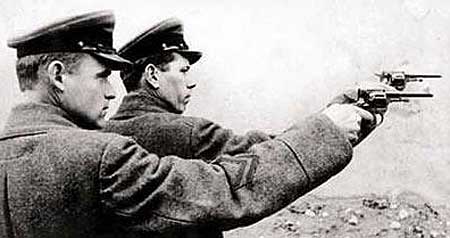
The iconic image of the revolver should also be familiar to film buffs – and the Nagant M1895 was recently seen in the latest Sherlock Holmes movie starring Robert Downey Jr. (the character is trying to create a silencer), while a Belgian made version served as a sidearm of choice for Young Indiana Jones. The infamous NKVD soldiers depicted in the film Enemy at the Gates fire away at deserting troops with the revolvers as well.
Today the gun is not uncommon, although those available without the import stamps can be quite rare. And while it may sound like it features a complex design, the truth is far from it. It is a reliable and simple to use gun that might be Belgian designed but it is as sturdy as a Russian Cossack. While not prone to jamming, when all else failed one could take the advice of an Imperial Russian officer, who reportedly stated that if the Nagant failed to fire, “you could fix it with a hammer” or likewise use it as one!
Peter Suciu is executive editor of FirearmsTruth.com, a website that tracks and monitors media bias against guns and our Second Amendment rights. Visit: FirearmsTruth.com


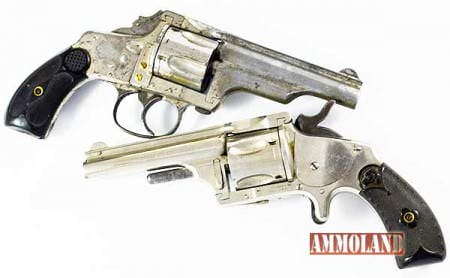



I Have Two Of Them & Love Them
The Nagant in addition to the Soviet TT-30/33 Tokarev semi- automatic pistol was a favored execution weapon of the NKVD. The first time I recall seeing a Nagant revolver on screen was depicted in the 1978 T.V. series "Holocaust." A Polish or Russian Nagant (yes the Poles used them too) was smuggled into the Warsaw Ghetto just prior to the April 19th, 1943 Warsaw Ghetto uprising. When the SS attempted to breach the door the Jewish defenders/resistant fighters took out one SS thug sending the others fleeing downstairs. The defenders thus were enabled to remove a 9mm MP-40 machinepistol and… Read more »